#spanish fantasy
Explore tagged Tumblr posts
Text
Fantasy throughout the world
On top of having an article centered around the French fantasy specifically, the "Modern Success" issue of the BNF Fantasy series also has an article (again written by Anne Besson) covering the topic of "Fantasy throughout the world". Here is, once again, a rough translation by your humble servant:
While heavily dominated by an English-speaking production, fantasy literature found its place in numerous European countries, and managed to cross several continents.
Born in England, grown in parallel on the two sides of the Atlantic oceans, and becoming a mass-phenomenon in the United-States, fantasy is without a doubt an anglophone genre. Even today the fantasy market has a MASSIVE unbalance, and the modern fantasy successes prove that the mondialization of the imaginations is dominated by the cultural superpower of the USA. But ever since the 1970s, as the translations of Tolkien spread across the world and role-playing games conquered the heart of teenagers, "native fantasies" started to appear in various European languages.
German fantasy is a good example of one of those "local takes" - it does help that Germany has a literary background including the Romantic movement, and the brothers Grimm fairytales. After the enormous success of Michael Ende's Never-Ending Story in 1979, the German fantasy did not stop. Many successful authors appeared. Wolfgang Hohlbein gained an internal fame, with his 1982 Märchenmond or his 1999's Chronicles of the Immortals. Cornelia Funke was a famous German youth author, with her trilogy "Inkworld" in 2003. Kai Meyer reworked Germanic legends in his 1998's Loreley or his 2001's Nibelungengold. Walter Moers created the continent of Zamonia, and popularized the character of Captain Blue-Bear (hero of a 1993's children television show, of two novels, and of a 1999's movie).
But very often, international fame only latches on one specific author that is well-known outside of their country's frontiers. In Poland, this author would be Andrzej Sapkowski with his 1986's Witcher series, adapted in 2007 as a video game, and in 2019 as a television series). In Spain, it would be Javier Negrete with his 2003's Tramorea.
Crossing the continents, it becomes very tempting to mix together the magic of fantasy literature with specifically cultural supernatural domains - the Hindu pantheon, the Chinese ghost stories, the kami and the yokai of Japan, the witchcraft of Africa or the Caribbean Isles...
South-America is rich of a literary tradition that in France we compare to our own "fantastique": the short stories of Argentina's authors Jose Luis Borges or Adolfo Bioy Casares in the 40s, the magical realism of Alejo Carpentier in Cuba (The Century of Lights, 1962), of Gabriel Garcia Marquez in Columbia (A Hundred Years of Solitude, 1967) or Carlos Fuenta in Mexico (Terra Nostra, 1975).
On the side of the African continent, The Road of Hunger, in 1991, by Nigerian author Ben Okri, is also part of this more "legitimate" current, a form of fantasy much closer to "general literature", but there is a new African generation, dominated by English-speaking women (Nnedi Okorakor, Nisi Shaw, Lauren Beukes) that fully appropriate and absorb the fantasy genre.
Up until a very recent date, it was considered more respectful to not assimilate these works, born of very different cultures, with a genre that is both modern and Anglo-Saxon. However, the numeric world and the mondialized economy have today destroyed a lot of cultural frontiers, and today we assist to a true "meeting of the imaginations" mixing various cultures together. The author of this article mentions as an example several works coming from East-Asia: the Japanese manga Full Metal Alchemist by Arakawa Hirowu, the other Japanese manga Witch Hat Atelier, or the Sino-American movie The Great Wall (2016).
#fantasy literature#foreign fantasy#fantasy references#fantasy novels#german fantasy#non-english fantasy#polish fantasy#spanish fantasy#african fantasy#european fantasy#japanese fantasy#fantasy throughout the world
10 notes
·
View notes
Text

Bad legs, good footwear
3 notes
·
View notes
Text

L’ Amour de Pierrot, 1920 by Salvador Dalí
#art#surrealism#surreal#surealart#surealism#surealist#dark art#dark and moody#darkcore#dark illustration#gothcore#goth aesthetic#gothic#goth#dark fantasy#dark aesthetic#dark academia#skull#skull art#skulls#painting#oil painting#oil on canvas#oil paint#salvador dali#spanish#spain#x
12K notes
·
View notes
Text

August Malmström, Dancing Fairies
#traditional art#classic art#art detail#classical art#traditional painting#oil painting#art history#art#art details#19th century art#1800s art#20th century art#academic art#artwork#art nouveau#art study#british art#fine art#contemporary art#german art#italian art#modern art#renaissance art#victorian art#spanish art#vintage art#fairy tail#fairies#fairy#fantasy
4K notes
·
View notes
Text

Esteban Maroto, ''Heavy Metal'', Vol. 8, #3, June 1984 Source
#esteban maroto#spanish artists#heavy metal#heavy metal magazine#magazine covers#cover art#fantasy art#color illustration
1K notes
·
View notes
Text
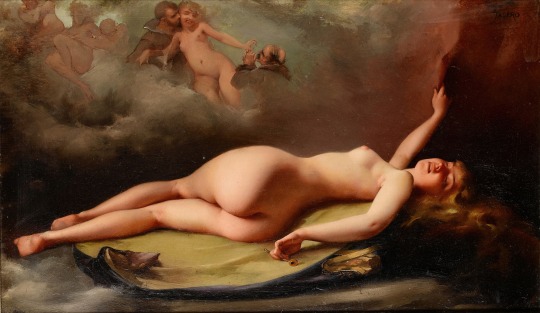
Reclining nude, 1879
Luis Ricardo Falero
4K notes
·
View notes
Text

The Moon Nymph by Luis Ricardo Falero (1883)
#luis ricardo falero#art#paintings#fine art#19th century#19th century art#academism#academicism#academic art#painting#spanish art#spanish artist#fantasy#moon#stars#moon nymph#classic art
4K notes
·
View notes
Text

The Guaxa, also called the Guajona, has often been seen wandering the forests of northern Spain, where she has made her home. She appears mostly human but can be distinguished by her bird feet and single long tooth with which she punctures the veins of her victims so as to feast on their blood.
#ink art#manga art#traditional art#fantasy art#mythology and folklore#cantabrian myth#spanish folklore#folk horror#european myth#vampire
343 notes
·
View notes
Text

Commission for @erizumon 🤩
Alchemist Doof from the fic “Encantado de conocerte” by El_Erizo_Que_Escribe (Fantasy!AU)
#this fic is in spanish#perryshmirtz#phineas and ferb#perryshmirtz fanfiction art#heinz doofenshmirtz#dr doofenshmirtz#human!Perry#fantasy!au#fanart#artists on tumblr#doof#pnf#pnf art
327 notes
·
View notes
Text
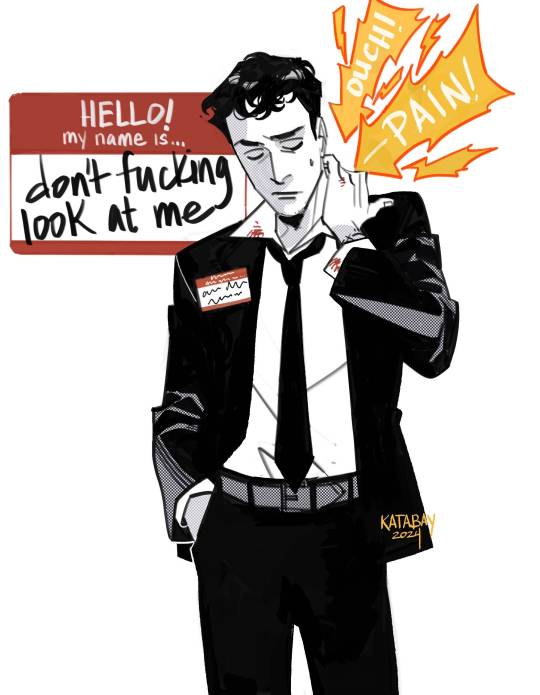

THE JETSET LIFE IS GONNA KILL YOU, ERIC CARTER!
my laptop charger uhhhhhh. met its end in a very permanent, very fire hazardy kind of way last week. while waiting for a replacement I decided to try and get some work done at the library and was asking around for some urban fantasy (extra points for a mystery plot of some kind) recommendations to check out while I was there
the eric carter series was mentioned a couple of times, AND had the added bonus of having a necromancer for a main character. I love necromancers. someday I'm gonna play one in a game instead of immediately defaulting to vampires.


Fire Season, Stephen Blackmoore
#i was also told to check out johannes cabal because. again. necromancers. and sandman slim#i'll get around to it next year probably#ive had urban fantasy on the mind ever since I did a full re read of the dresden files and then a SECOND re read of it right after#but from a different starting point and then did an unnecessary examination of harry as an unreliable narrator#with a very specific kind of world vision that does funny things to his perception. idk what purpose that served#ANYWAY. i got a whole list of gritty urban fantasy recommendations to slowly work through next year#i dont really play around with original english language urban fantasy fiction very often because it's like#a lot of what i want out of it I already get out of japanese/korean comics I read and also filipino horror#so I'm not exactly starved for it except that I'm low key kind of starving for it. when will filipino horror return from the war#anyway i appreciate the hate the main character has for spanish colonialism#and as a long time whump enthusiast i love it when a character goes through the absolute wringer#creative liberties were taken. i thought about rolling up the sleeve on his. left? arm and then thought about the tattoos and changed#my mind lmao. i started drawing some of them tho. i once dated a guy who was similarly tattooed and for a minute i thought#'well i can just rip off all of that' and then i thought 'wait i still have to draw it' and decided Not To#eric carter series
176 notes
·
View notes
Text
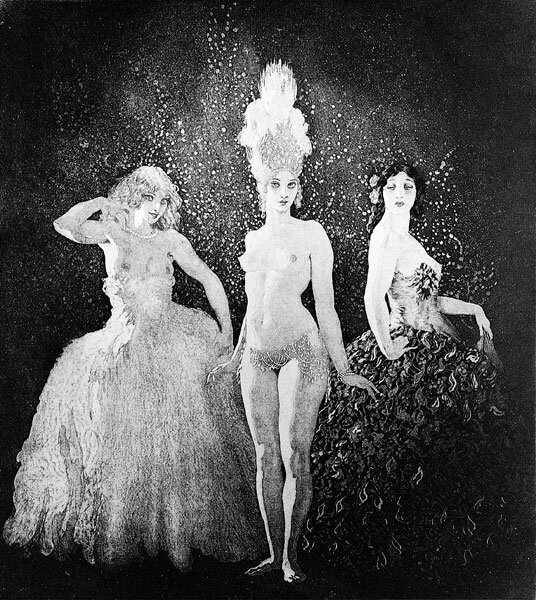


Illustrations by Australian artist Norman Lindsay (1879-1696)
"Three Dresses"
'The Eighties" and 'Spanish Lady"
#norman lindsay#mdpillustration#illustration#20th century#fantasy#historical#spanish costume#early 20th century#drawing#19th century#late 19th century
233 notes
·
View notes
Text
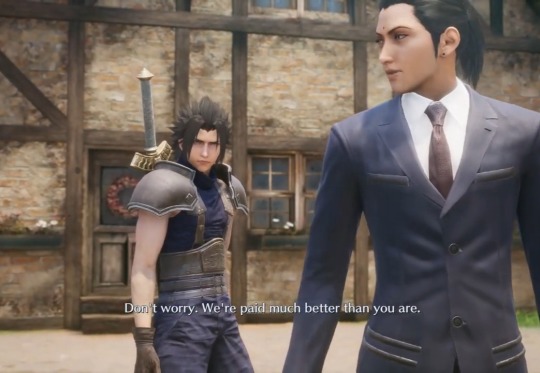

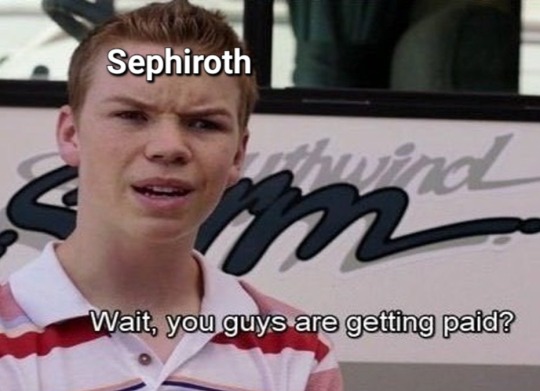
#Also the Spanish subtitles for this scene in crisis core have Zack say#¡No jodas! Which translates to Don't fuck with me or No fucking way.#Sephiroth#ffvii crisis core#zack fair#ffvii#final fantasy vii#It's okay tho I don't think Sephiroth has much of a concept of monetary value or compensation
54 notes
·
View notes
Text
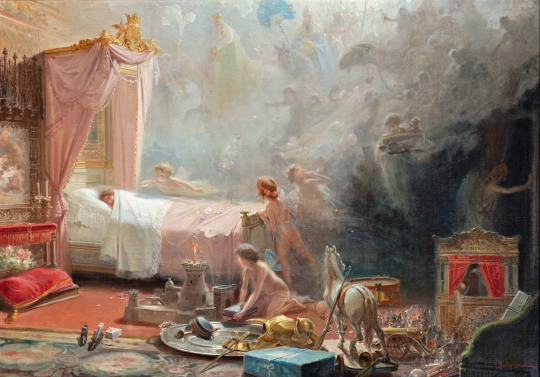
Night of the Three Kings by Julio Borrell Pla
#julio borrell pla#art#night#dream#dreams#three kings#three wise men#los reyes magos#bed#beds#royal#royalty#nobility#aristocratic#spain#spanish#europe#european#fantasy#sleep#sleeping#dreaming
307 notes
·
View notes
Text
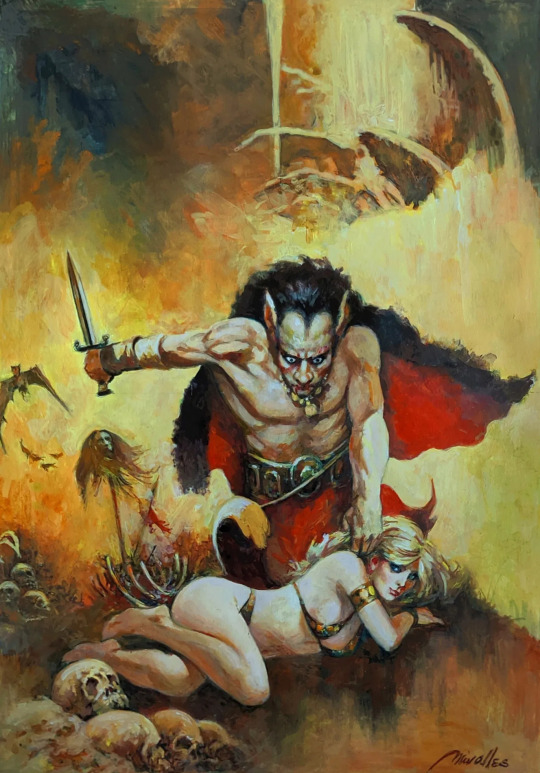
Josep Maria Miralles (b. 1937) - Original cover painting for 'Dossier Negro' #117, 1979
#josep maria miralles#dossier negro#cover art#horror art#fantasy art#pulp art#spanish comics#art#painting
107 notes
·
View notes
Text

Loutherbourg, L'Ouverture du deuxième sceau
#traditional art#classic art#art history#classical art#oil painting#19th century art#traditional painting#art details#art detail#art#1800s art#20th century art#academic art#artwork#art study#contemporary art#fine art#modern art#italian art#german art#spanish art#renaissance art#drawings#darkness#dark academia#dark fantasy#dark art#dark aesthetic
120 notes
·
View notes
Text
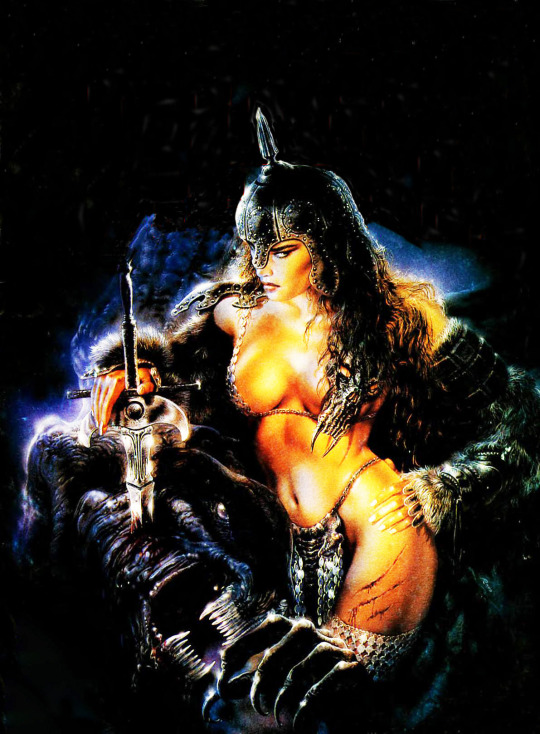
Luis Royo, ''Heavy Metal'', Vol. 18, #6, March 1993
#luis royo#spanish artists#heavy metal#heavy metal magazine#magazine covers#fantasy art#women with swords#color illustration#the male gaze
214 notes
·
View notes